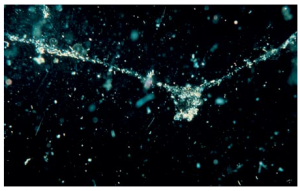Loops of Change: the Positive Feedback Loops that Drive Climate Change (Part III)

The Biological Pump
Earlier this week, the National Snow and Ice Data Center reported that Arctic sea ice extent declined at an average rate of 46,000 square miles per day during the first two weeks of July. You can track daily images of sea ice extent here.
While sea ice naturally melts every summer, this summer’s melt area already surpasses the 1979 – 2000 average by 865,000 square miles. This, in part, results from this year’s early onset of melting, which occurred two weeks to two months earlier than the 1979 – 2000 average in certain regions. Early spring melting produces colonies of melt water ponds on top of the ice that decrease ice albedo and induce further melting. While sea ice extent is currently at record low levels, predictions for the duration of the summer suggest that ice extent will not ultimately surpass the record minimum levels of September 2007.
The direct climatic effects of increased melting, such as decreased net albedo, are relatively easy to identify. The indirect effects, on the other hand, can be more elusive. For example, what are the implications of melting sea ice on the phytoplankton community of the ocean? Why does this question concern climate scientists?
Marine phytoplankton drive the biological pump, a carbon sequestration mechanism that, along with the solubility pump, makes the ocean a major global carbon sink. Phytoplankton suck carbon dioxide out of the atmosphere during photosynthesis. When they die, or are released as fecal pellets of zooplankton, they aggregate and sink out of reach of the atmosphere. The resulting mass of ‘marine snow’ showers the sea floor with sequestered carbon dioxide, and slowly accumulates over geologic time as a layer of sedimentary rock. The White Cliffs of Dover are an example of an exhumed phytoplankton graveyard and vault of ancient atmospheric carbon dioxide.

Global climate both manipulates, and is manipulated by, the efficiency of the biological pump. As sea ice melts, the ocean surface freshens and absorbs more heat. This fresh, warm water is more buoyant than the cold, saline water below, and forms a floating layer that stratifies the water column. The resulting density barrier near the surface of the ocean can prevent deep, nutrient rich bottom waters from upwelling and fertilizing plankton blooms. With a limited nutrient supply, plankton blooms atrophy and the efficiency of the biological pump decreases.
Given the wide variability in temperature, salinity, and currents across the global ocean, melting sea ice will not have a uniform effect on the biological pump. In some regions, its efficiency may remain unaltered, or may improve for unrelated reasons. Ultimately, climate-induced changes in the solubility pump will likely have a larger impact on the role of the ocean as a carbon sink. Still, the biological pump remains an active area of research for climate scientists.
As oceanic carbon sinks begin to weaken, will terrestrial sinks compensate? Stay tuned for next week’s post on Permafrost Thaw and Wetland Decay, where we will leave the oceans to trek through a terrestrial loop of change.
Posted by Laura Poppick, Assistant Editor of Maine Climate News.
Loops of Change is a weekly series through July exploring the major positive feedback loops that drive climate change.
